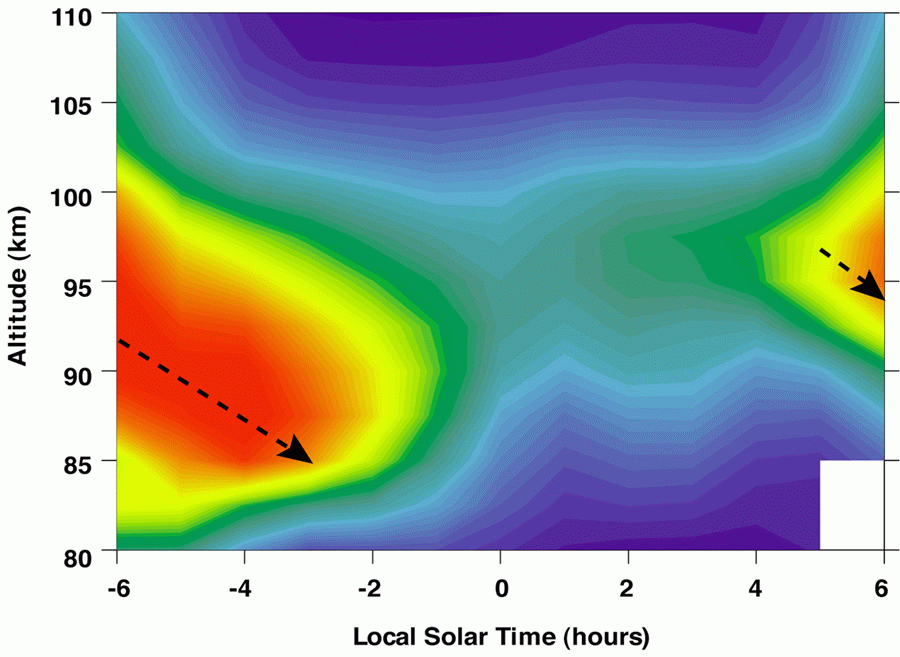
In the upper mesosphere, the recombinatin of oxygen atoms to form O2 produces airglow, which is observed by WINDII. The influence of tides on airglow is shown versus altitude and local time at the equator for March to April 1993. In the evening (-6 hours) the airglow layer is very bright and is centered near 92 km. As the evening progresses, the emission layer moves downward in altitude, "pushed" by the diurnal tide (arrows). The bottom of the layer finally dips below 85 km, where the atmosphere begins to run out of oxygen atoms. Thus by midnight (0 hours) the airglow is nearly extinguished. After midnight, as a fresh supply of oxygen atoms is brought down by the tidal winds, the airglow begins to re-establish itself at its normal altitude of 96 km. Red represents high airglow emission, blue represents low emission.

Last modified: March 08, 2017